It’s hard to imagine a simple brown bulb dropped into the earth in October can explode with colorful life just a few months later. But that’s exactly how daffodils operate! Daffodils are one of the happiest harbingers of spring out there. Even non-gardeners will notice these cheerful sunny blooms, which often emerge early in the year when the rest of the landscape is still gray and bare of greenery.
Daffodils are popular for many reasons, aside from their no-maintenance lifestyle. Unlike tulips, which are typically grown as annuals or very short-lived perennials, daffodils multiply and persist year after year, making them a fantastic choice for naturalizing large beds and lawns. Daffodils are also relatively pest-free, as the bulbs are unappealing to most animals and insects.
Gardeners, plant breeders, and collectors have had a field day with this beauteous bulb, creating a multitude of colors, shapes, sizes, and bloom times. There are now 32,000 registered daffodil cultivars, although only about 10% of them are commercially available for gardeners. Dig in and learn about some of those varieties – maybe you’ll feel inspired to add a few to the garden this fall.
‘Actaea’
‘Actaea’ is a poeticus type daffodil, meaning it has a small, flat central cup and very large outer petals. Poeticus daffodils are hybrids of the wild pheasant eye daffodil. The central cups (called coronas) of this variety are rich yellow and rimmed with bold red. Many daffodil varieties have a light, sweet fragrance. However, this one bears a slightly spicy scent.
‘Actaea’ bulbs grow easily and multiply rapidly over the years, making them an excellent variety for naturalizing large lawn and garden spaces. This variety blooms in late spring, often one of the last daffodils to flower. Their unique tricolor flowerheads also look striking in bouquets, especially when paired with yellow and red tulips.
‘Apricot Whirl’
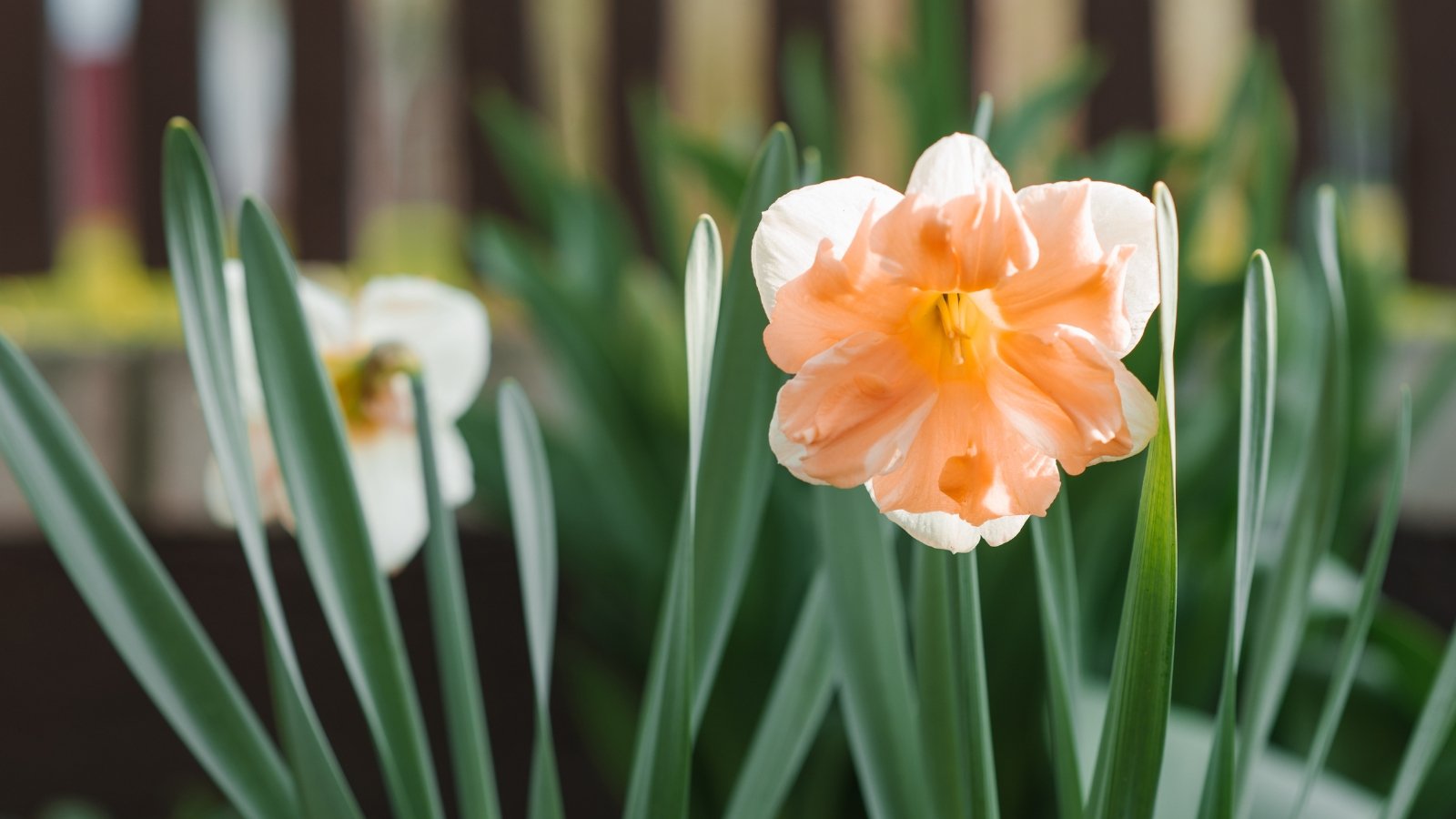
‘Apricot Whirl’ is considered a butterfly or split corona type of daffodil, meaning the center cup (corona) is not one single piece but split into several that flare outward. This cultivar features ivory white outer petals with a deeply ruffled center cup in shades of warm peach. The blooms on this daffodil are eye-catching and large, typically 3-4 inches wide.
‘Apricot Whirl’ blooms in mid spring. Mix with other peachy-hued daffodil varieties described below for beautiful spring color!
‘Cassata’
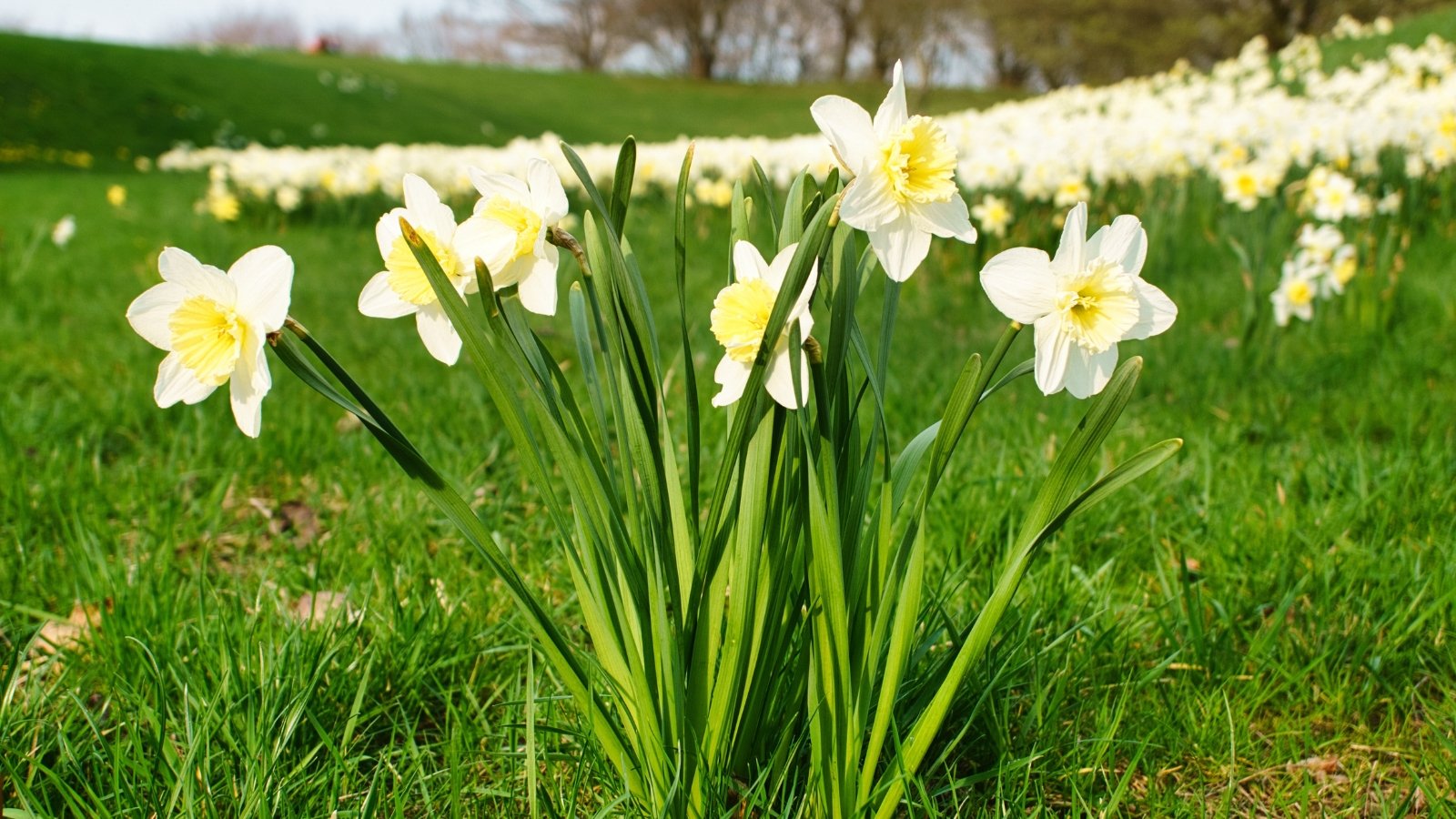
Another split corona daffodil, ‘Cassata’ features a huge, lemon yellow central cup that nearly covers the solid white outer petals. As the flower matures, the entire bloom fades to white. Flowers are sweetly scented and typically stand up to 18 inches tall.
‘Cassata’ blooms in early to mid spring. It naturalizes easily, meaning it will multiply and return spring after spring. Pair with early-blooming tulip ‘Verona’, which also features exquisite lemon yellow and white petals.
‘Dancing Moonlight’
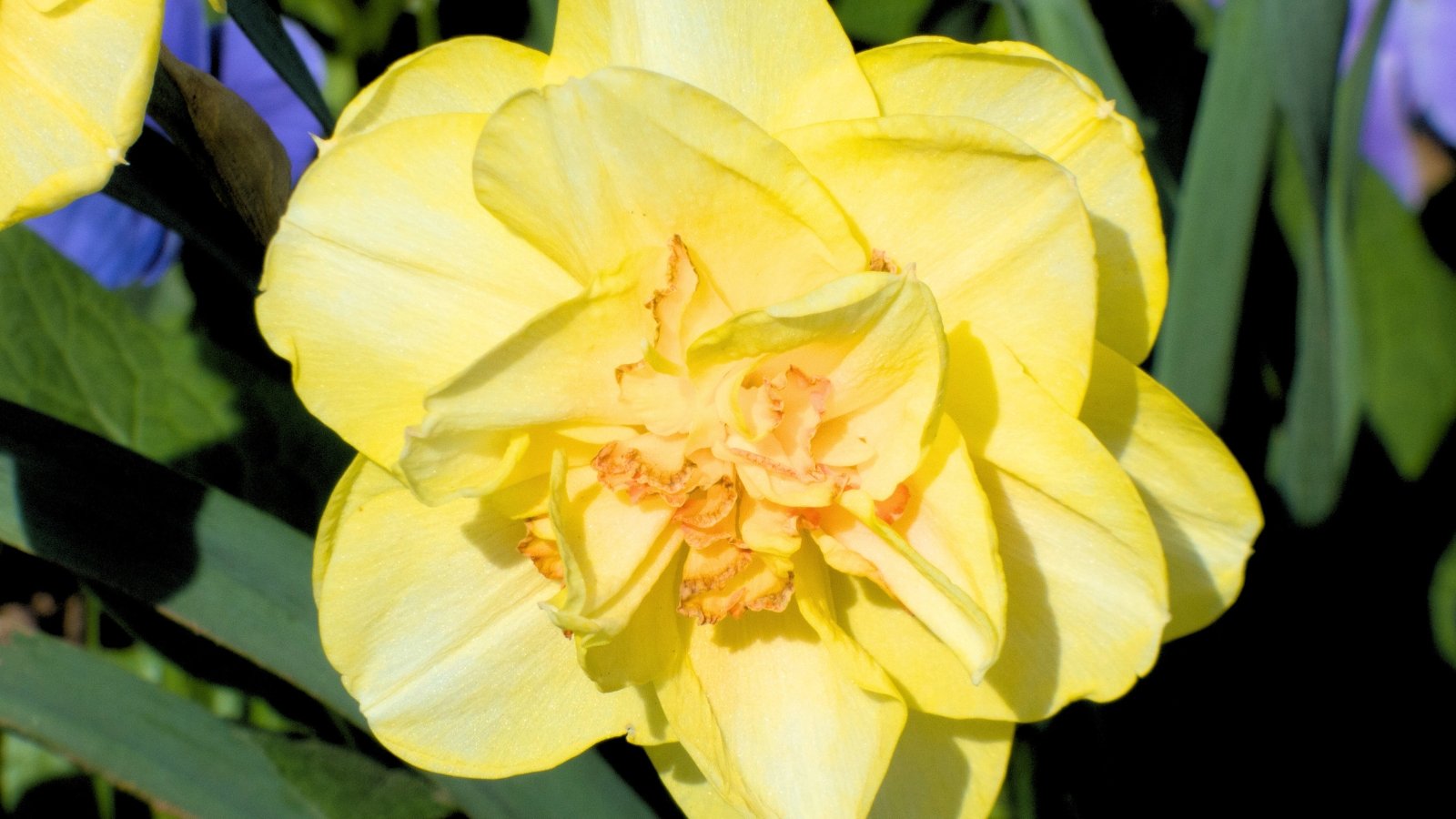
‘Dancing Moonlight’ is a beautiful butterfly type of daffodil. Soft pastel yellow blooms have hints of green in their ruffled centers. Sturdy stems support 3-inch wide blooms.
This variety flowers in mid to late spring. Tuck into garden beds with hyacinths and midseason tulips. The flaxen yellow color of ‘Dancing Moonlight’ pairs beautifully with other pastel spring bulbs.
‘Dutch Master’
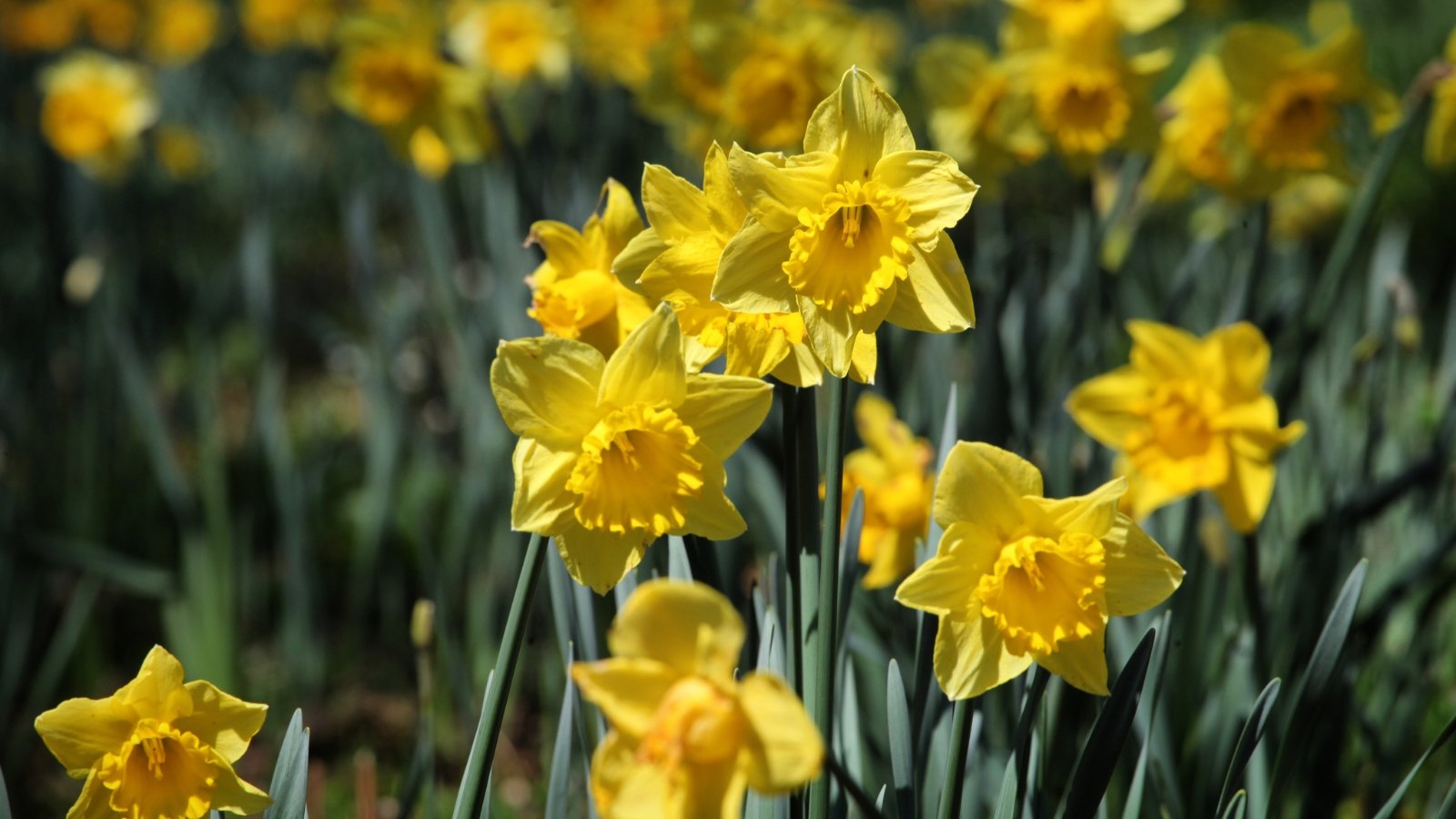
The classic bold yellow daffodil! ‘Dutch Master’ features solid bright yellow blooms that open in early to mid spring. This is a tall variety, typically reaching 18-24 inches in height.
A traditional trumpet daffodil, ‘Dutch Master’ is a Royal Horticultural Society Award Winner. Plant this show-stopping daffodil en masse across lawns, meadows, and perennial beds. ‘Dutch Master’ naturalizes easily and provides dependable color.
‘Falconet’
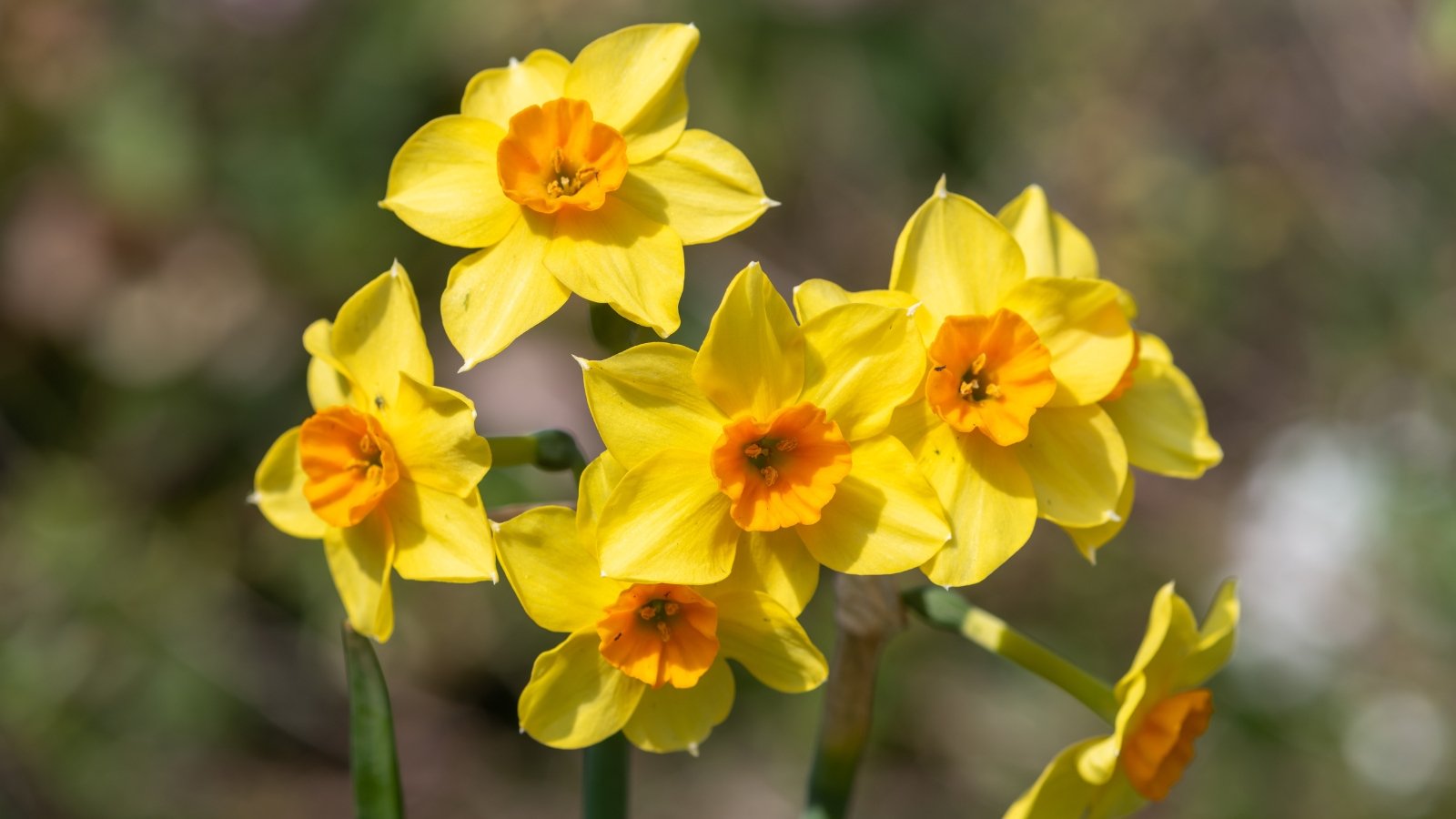
‘Falconet’ is a tazetta type, meaning it is a bunch-forming daffodil that produces multiple flowers per stem. Cheery flowers feature yellow outer petals and bright orange center cups. This highly fragrant daffodil typically produces 3-5 petite blooms on each stem.
‘Falconet’ typically blooms in late spring. This flowering bulb’s small stature and floriferous blooming habit make ‘Falconet’ perfect for containers and pots. It also tolerates heat better than most daffodil varieties, making this an excellent choice for gardens in warmer climates.
‘Flower Surprise’
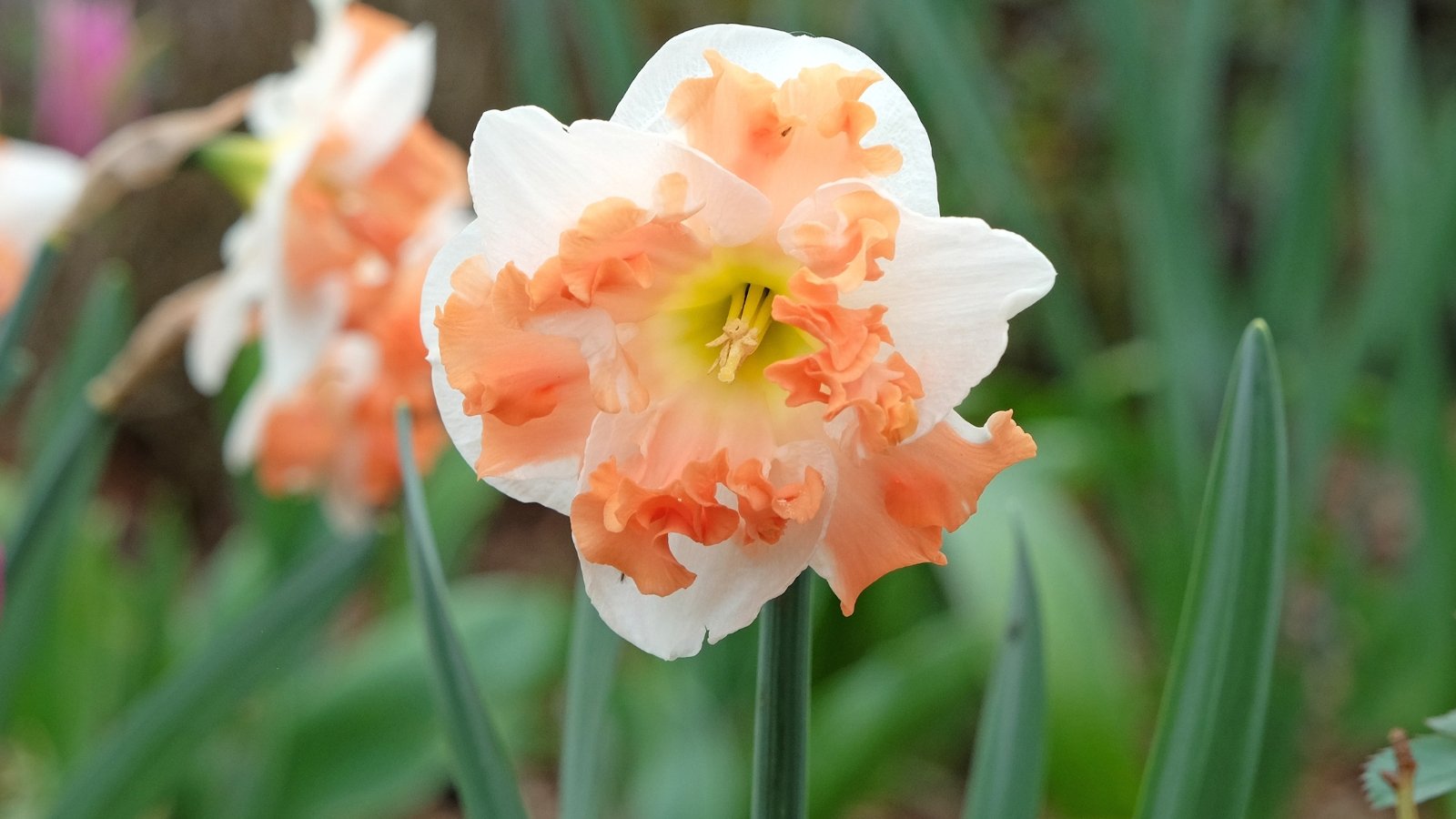
Florists and floral designers, take note of this stunning bulb! ‘Flower Surprise’ is a double flowering daffodil with layers of champagne and peach petals. Its full, lightly scented flowers almost resemble peonies.
‘Flower Surprise’ blooms mid spring. It generally stands 12-16 inches tall and features 3-inch wide blooms on sturdy stems.
‘Golden Dawn’
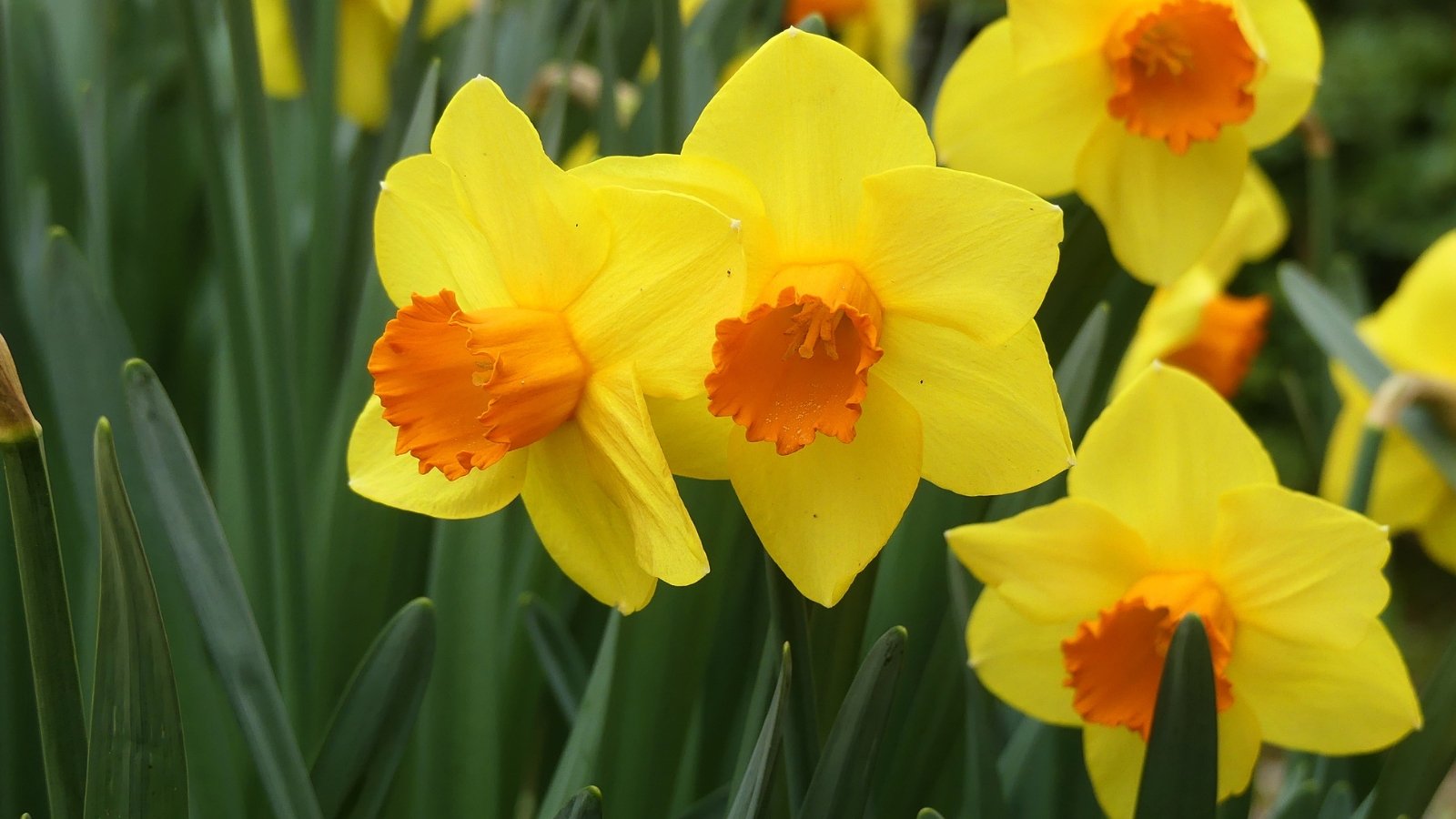
The sunny yellow outer petals of ‘Golden Dawn’ surround a bright orange center corona that darkens slightly as the flower ages. As a tazetta variety, ‘Golden Dawn’ produces multiple flowers per stem. It flowers in mid to late spring, bridging the gap nicely between flowering bulbs and early perennials.
‘Golden Dawn’ is one of the best daffodil varieties for southern climates, as it tolerates both drought and heat. Conversely, bulbs planted in colder climates will benefit from an inch or two of insulating mulch. Plant this sweetly scented variety at the front of borders where its fantastic fragrance can be appreciated.
‘Ice Follies’
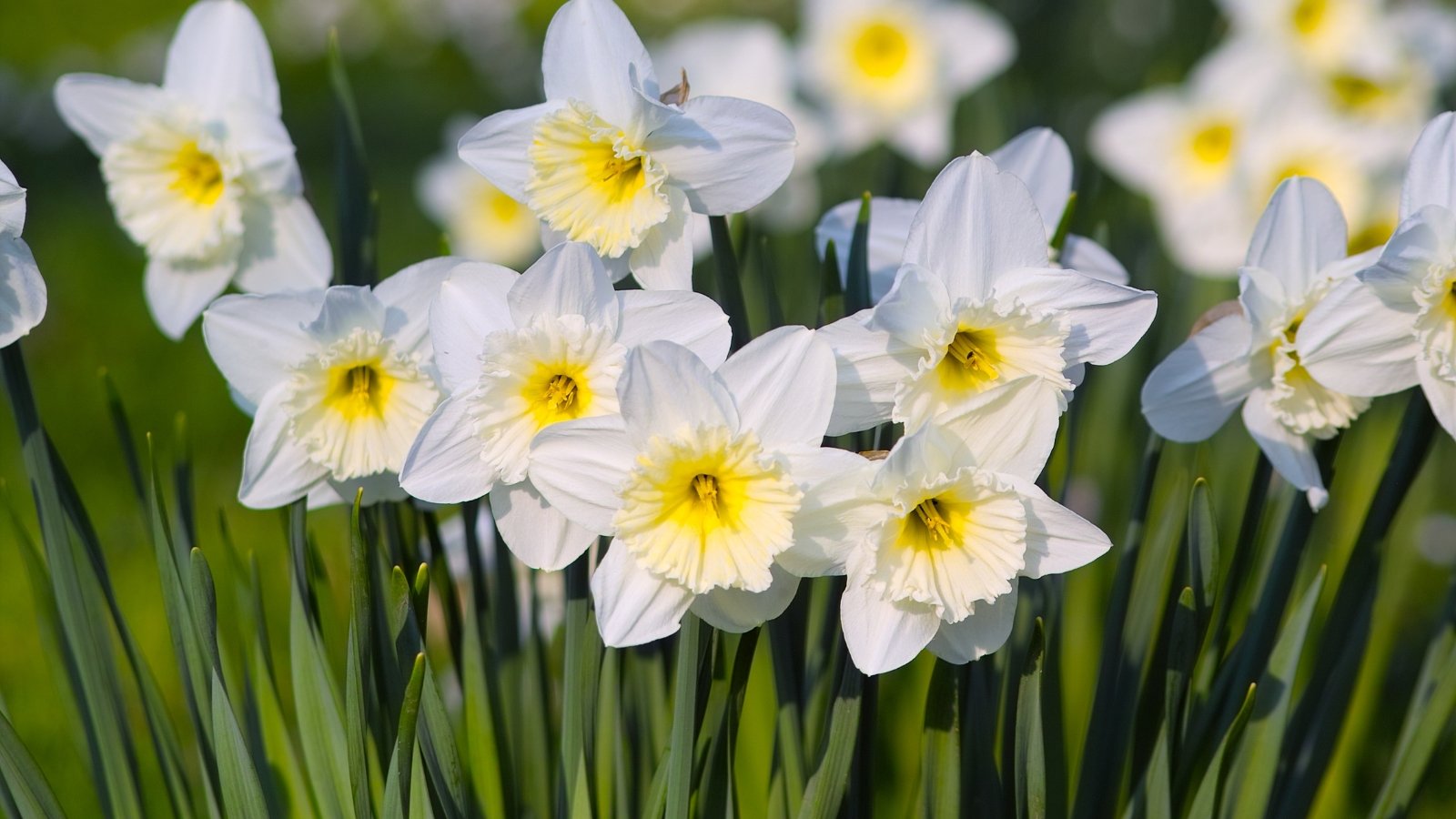
A tall, large-cupped daffodil, ‘Ice Follies’ is an incredibly popular variety. ‘Ice Follies’ features pure white outer petals with a buttery yellow center cup that gradually lightens to a pale lemon color throughout the spring. Blooms easily reach 3-4 inches in width.
‘Ice Follies’ is an early spring bloomer, bringing much-needed life and color to the sometimes still-brown landscape. This daffodil multiples quickly, making an excellent bulb for naturalizing or mass planting. Highlight its butter yellow coronas by planting this daffodil with bold yellow tulips, like ‘Monte Carlo’.
‘Itzim’
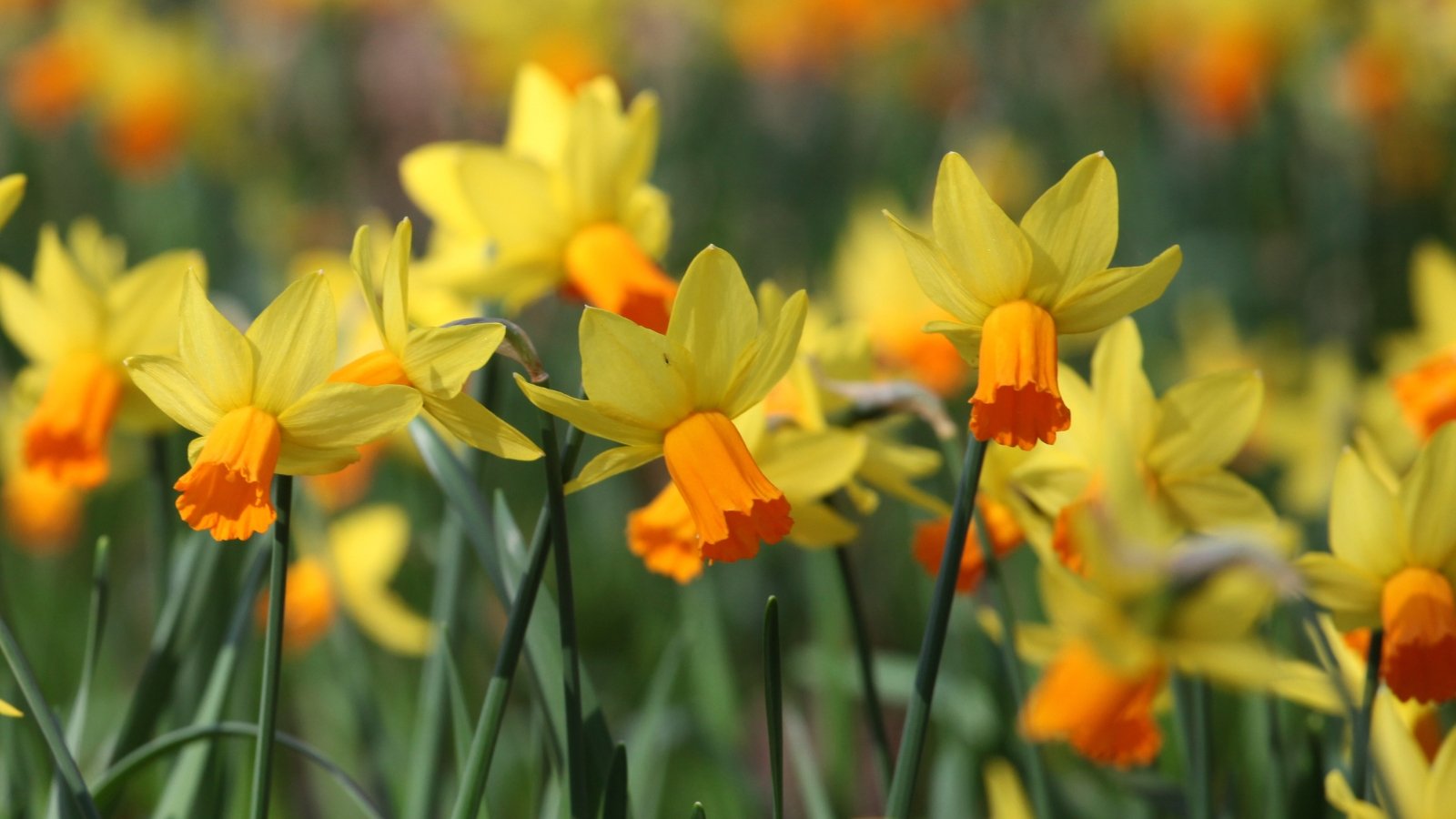
‘Itzim’ is a variety of cyclamineus daffodil, which are typically identified by their long trumpet-like cups and downward-facing flowers that form acute angles with the stem. The blossoms have bright canary yellow outer petals that sweep backward around golden orange central cups.
Cyclamineus daffodils can tolerate shady locations and heavier soil better than most other varieties. ‘Itzim’ blooms early in the spring. Plant with other early spring bulbs like purple and yellow crocuses. Its smaller stature also makes this an exceptional variety for planters and containers.
‘Pink Charm’
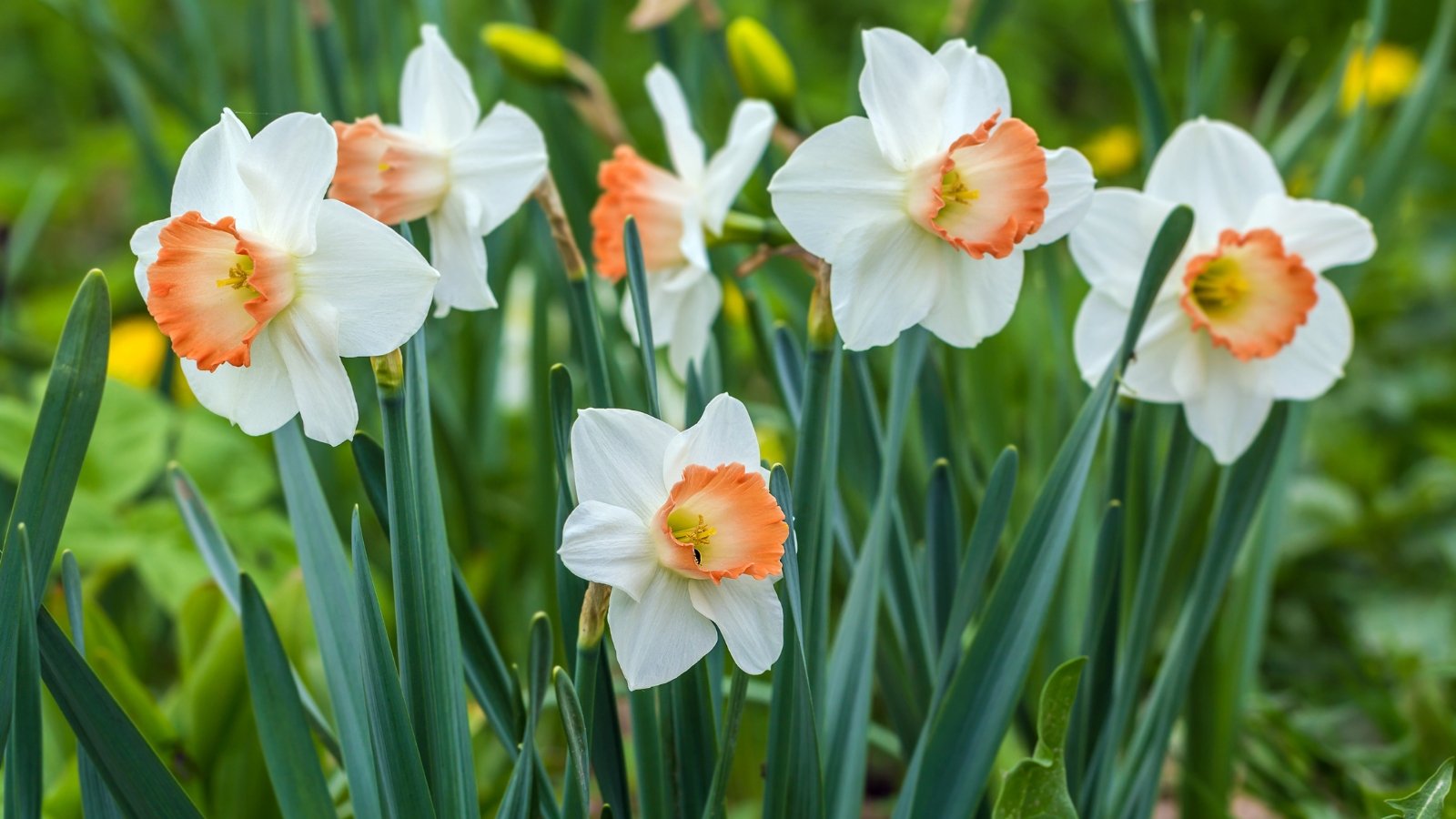
‘Pink Charm’ is an elegant daffodil with large, 3-inch wide blooms. Ivory white outer petals frame a coral pink and white center cup. This is a large-cupped variety, one of the most popular of the 13 different daffodil divisions.
‘Pink Charm’ blooms in early and mid spring. This daffodil’s unique color combination and tall, sturdy stems make it an excellent cut flower. Try pairing with rosy hyacinths and other pink-hued daffodils like ‘Accent’ or ‘Blushing Lady’.
‘Professor Einstein’
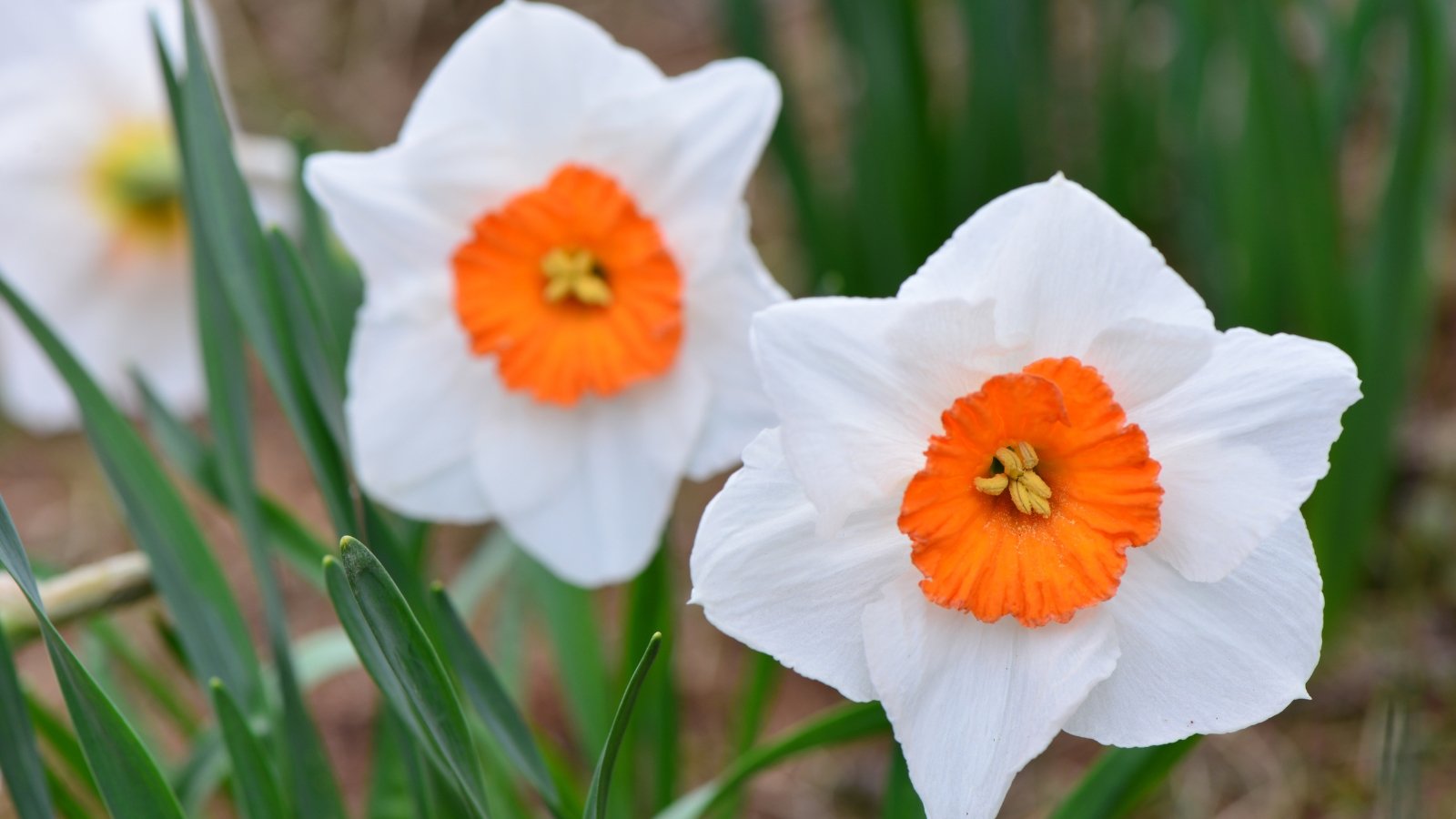
With its dramatic, rich tangerine-colored center cup set against snowy white outer petals, ‘Professor Einstein’ almost resembles a (very beautiful) fried egg. This is a bold, truly unique combination of colors in a daffodil. Sturdy 16-18-inch tall stems support large, fragrant blooms.
This variety naturalizes easily, making it the perfect bulb for large lawn and meadow spaces. ‘Professor Einstein’ blooms mid-spring. Try pairing it with orange-hued tulips like ‘Daydream’.
‘Red Devon’
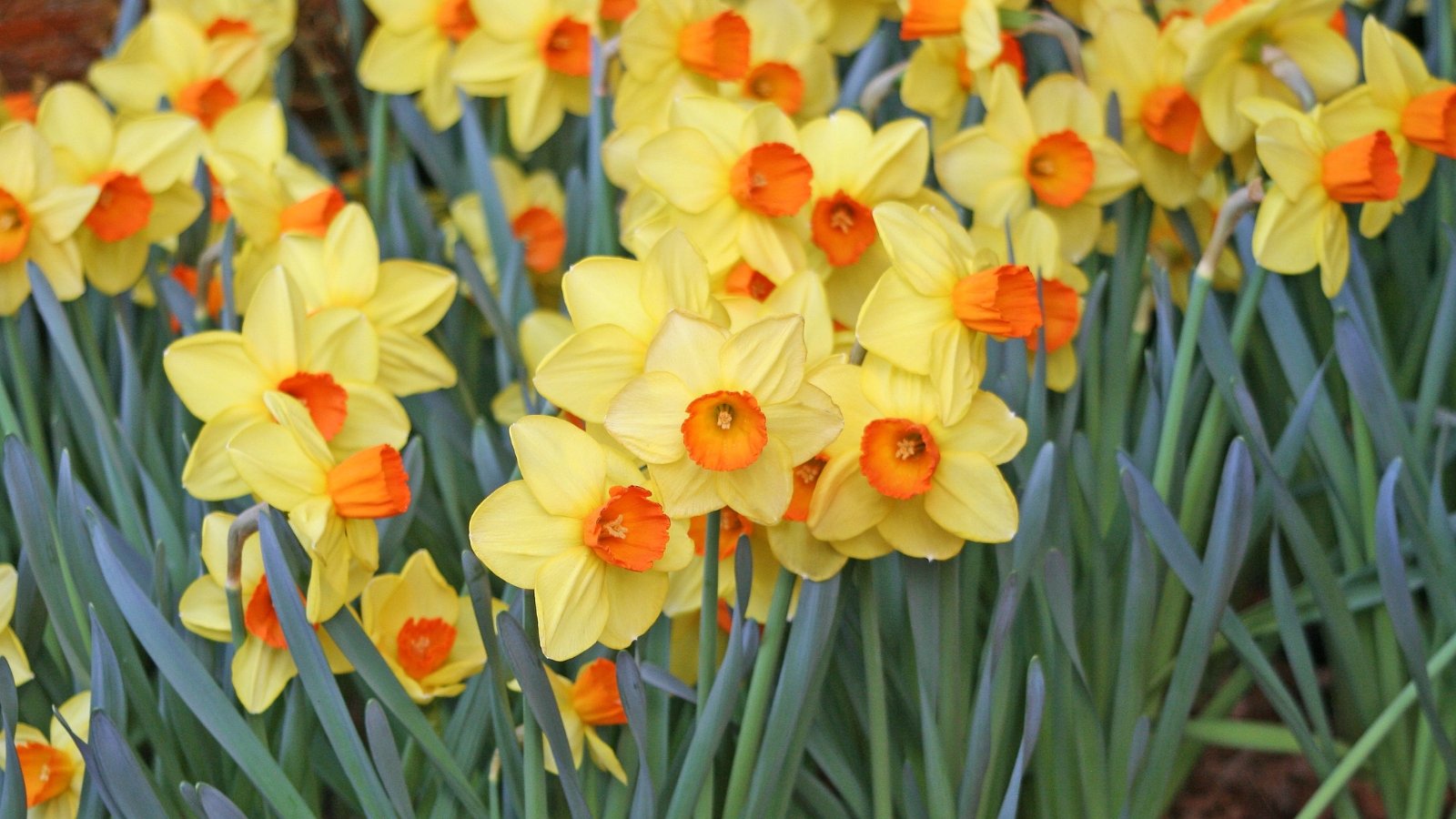
‘Red Devon’ is sure to energize the spring garden! This heirloom variety, named for the “red” cattle of Devonshire, England, where it was bred, features vivid yellow outer petals and an orange central cup. The cup is slightly ruffled at the edges and deepens to a glowing red-orange as the bloom matures.
This is a tall variety, easily reaching 20 inches in height. Plant in the middle of a garden bed or border, or use as a bold cut flower. ‘Red Devon’ blooms in early to mid-spring, adding a much-needed burst of color to the pale landscape.
‘Rose of May’
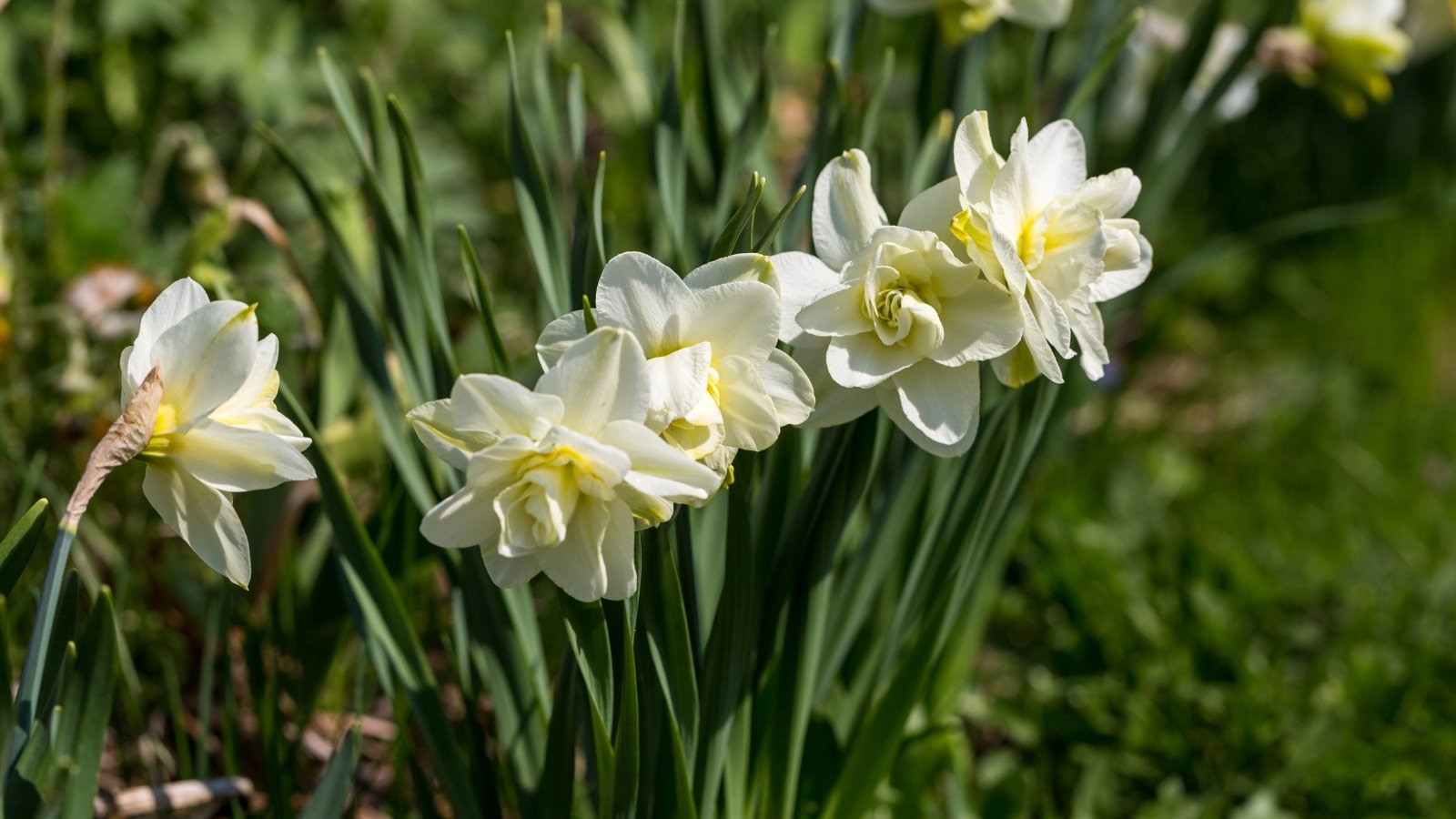
Layers of ruffly white petals and a sweet fragrance make this very suitably-named daffodil a showstopper. ‘Rose of May’ is a rare variety that stands up to 18 inches tall. Its sweetly-scented blooms make it a beautiful cut flower.
‘Rose of May’ blooms very late in the spring. Its clean white color pairs easily with other late-season flowering tulips of all colors and patterns. Tuck it along walkways and in the front of mixed perennial beds where its intricate petals can be easily admired.
‘Spellbinder’
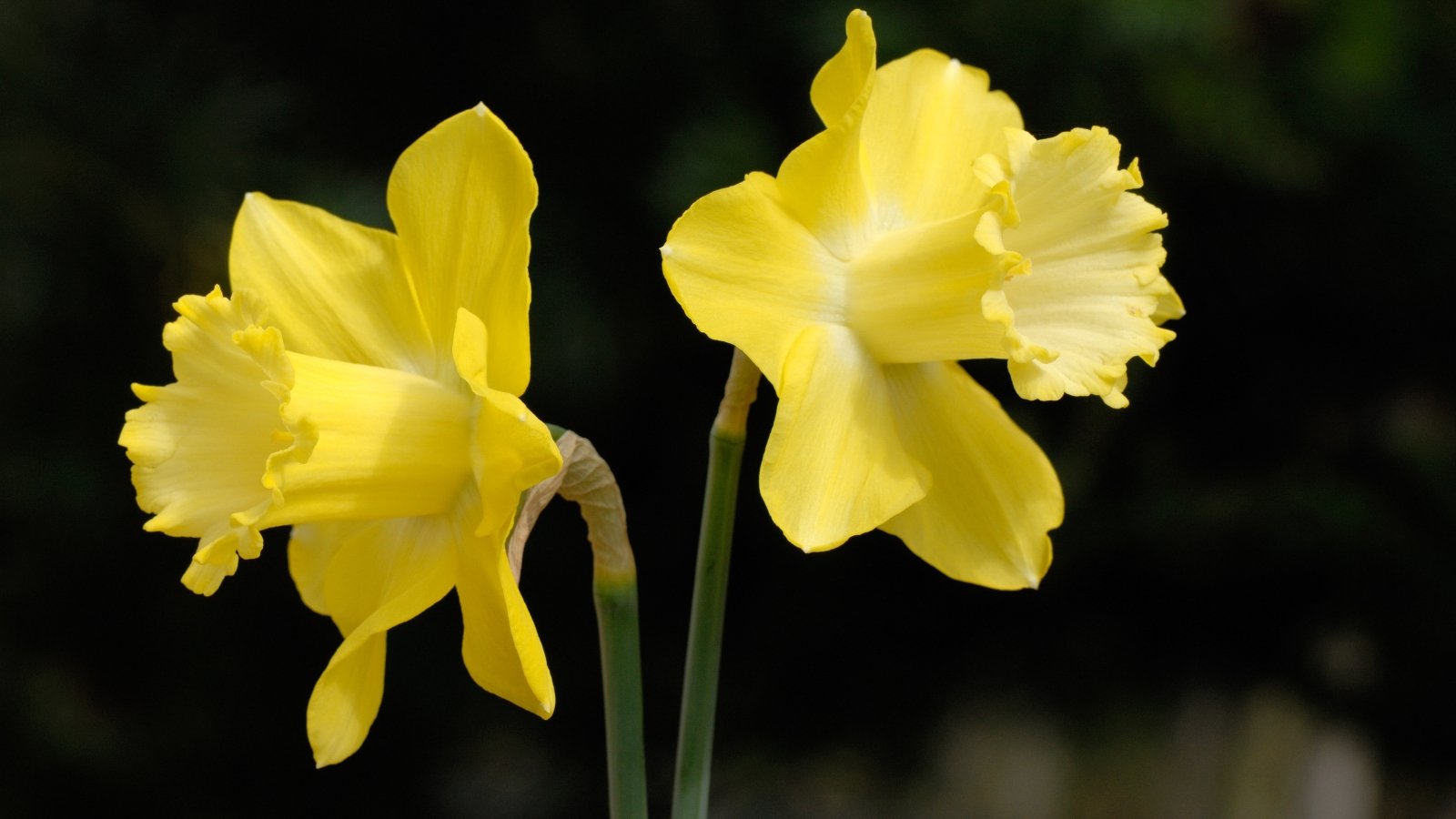
Another quintessential daffodil, ‘Spellbinder’ features huge blooms and the traditional trumpet-shaped corona. Each flower opens with greenish-lemon yellow petals, and the corona matures to white with a line of pale yellow at the rim. Flowers are 3-4 inches wide at their maximum.
‘Spellbinder’ blooms in early to mid-spring. Use as a brilliant understory planting under trees and tall shrubs. This variety typically grows to be 14-16 inches tall.
‘Sun Disc’
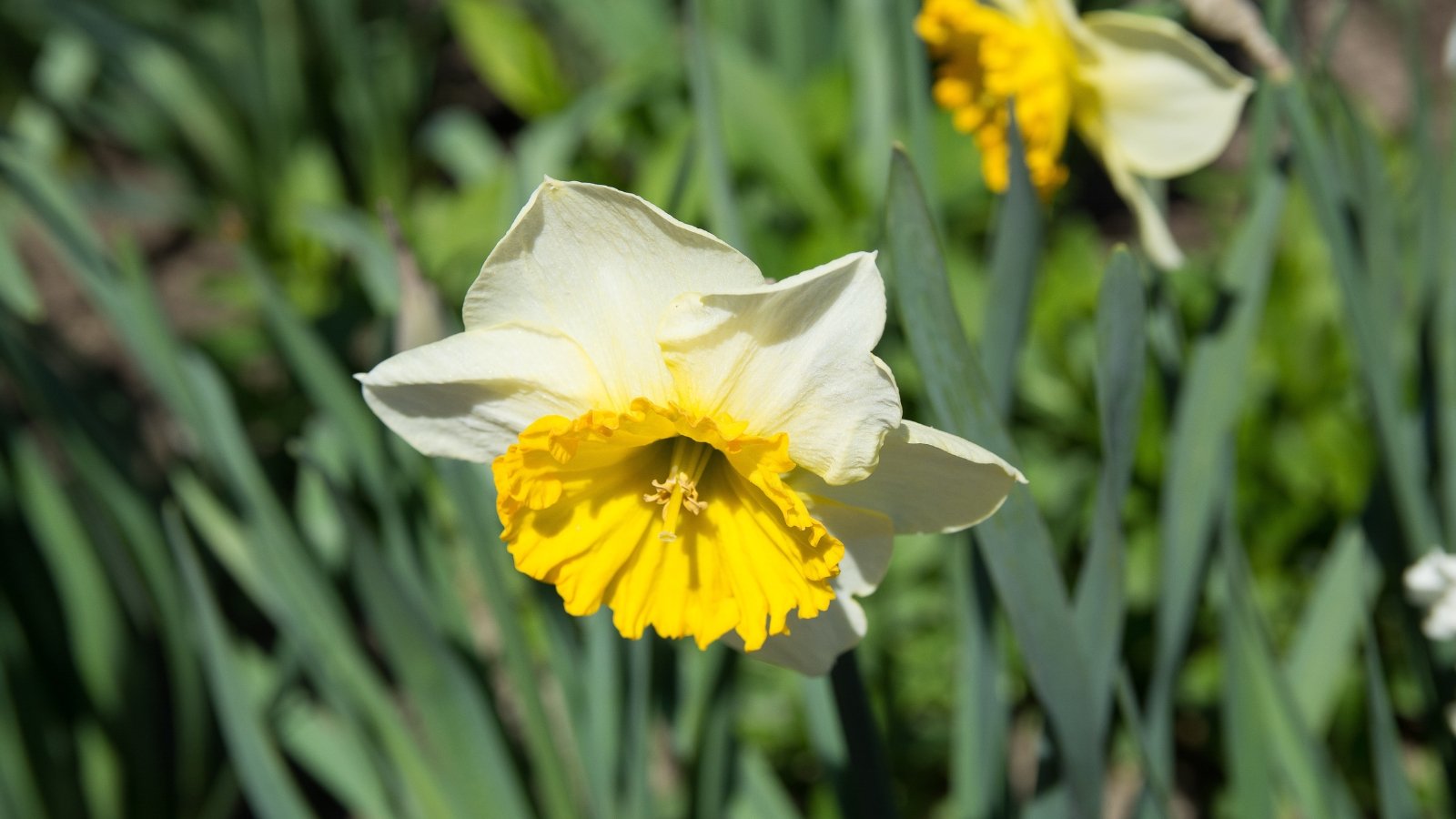
Look at this cheery face! ‘Sun Disc’ features a dark yellow central cup that lies flat against pale yellow outer petals. Outer petals are rounded and overlapping, giving this daffodil a unique shape compared to other traditional varieties. Blooms are small, just about 1 inch wide, so plant bulbs densely for maximum impact. This variety blooms in late spring, and would look so sweet planted in front of a row of dwarf irises or other late-spring bloomers.
‘Sun Disc’ is a jonquilla type daffodil. This category of daffodils is known for cylindrical, reed-like foliage and the ability to grow happily in hot temperatures. Its heat tolerance makes ‘Sun Disc’ perfect for southern gardeners who want to add daffodils to their beds and borders.
‘Tête-à-Tête’
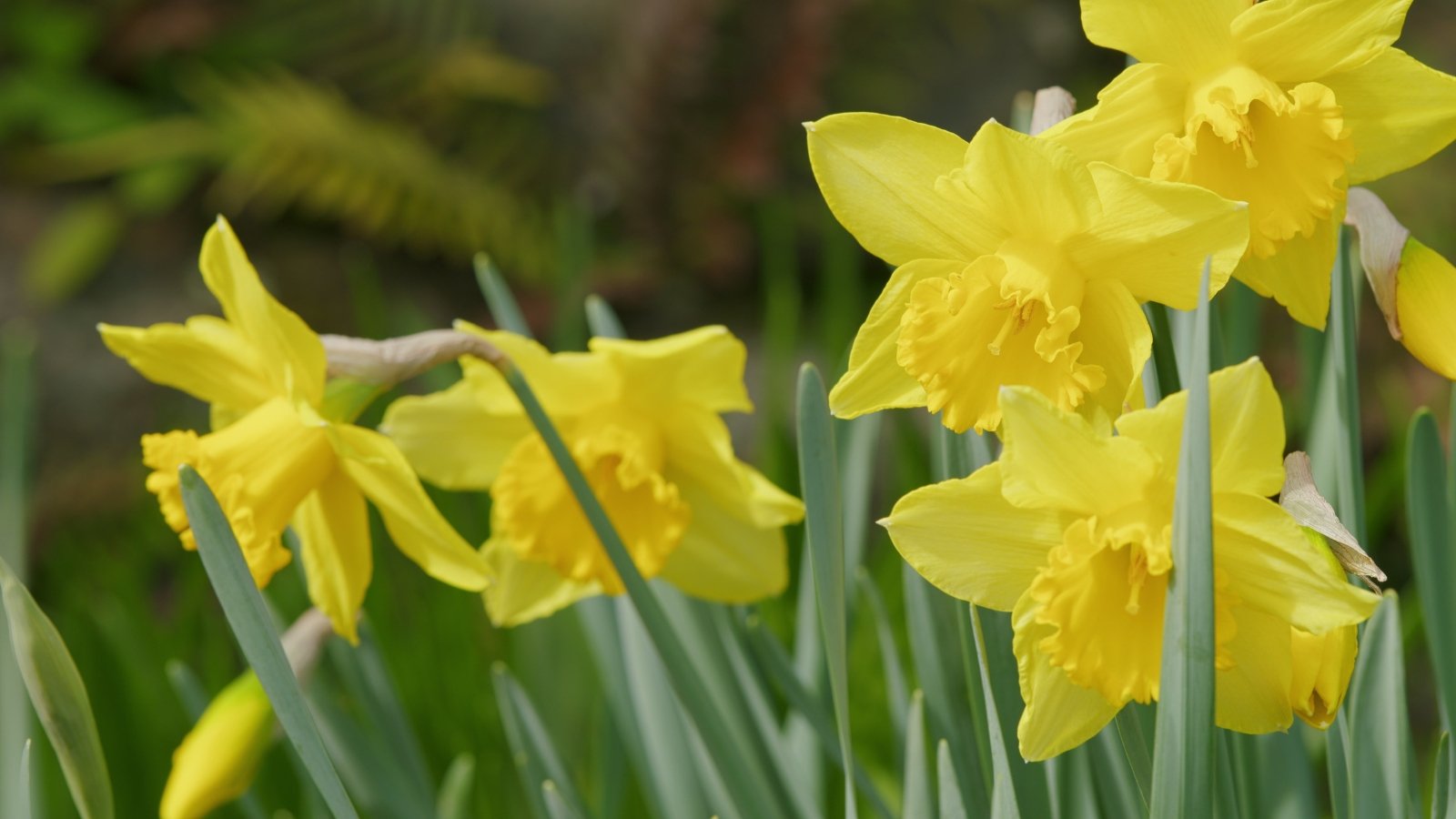
‘Tête-à-tête’ packs plenty of punch for its tiny size. A miniature cyclamineus daffodil that stands no taller than 8 inches,’Tête-à-Tête’ is a rich yellow with a slightly darker yellow inner cup. Each bulb produces multiple stems, and each stem typically produces 2-3 flowers.
This is an early-blooming daffodil. Pair with crocus and other early spring bulbs for a beautiful display! Its short size makes this an excellent bulb for containers and other planters.
‘Thalia’
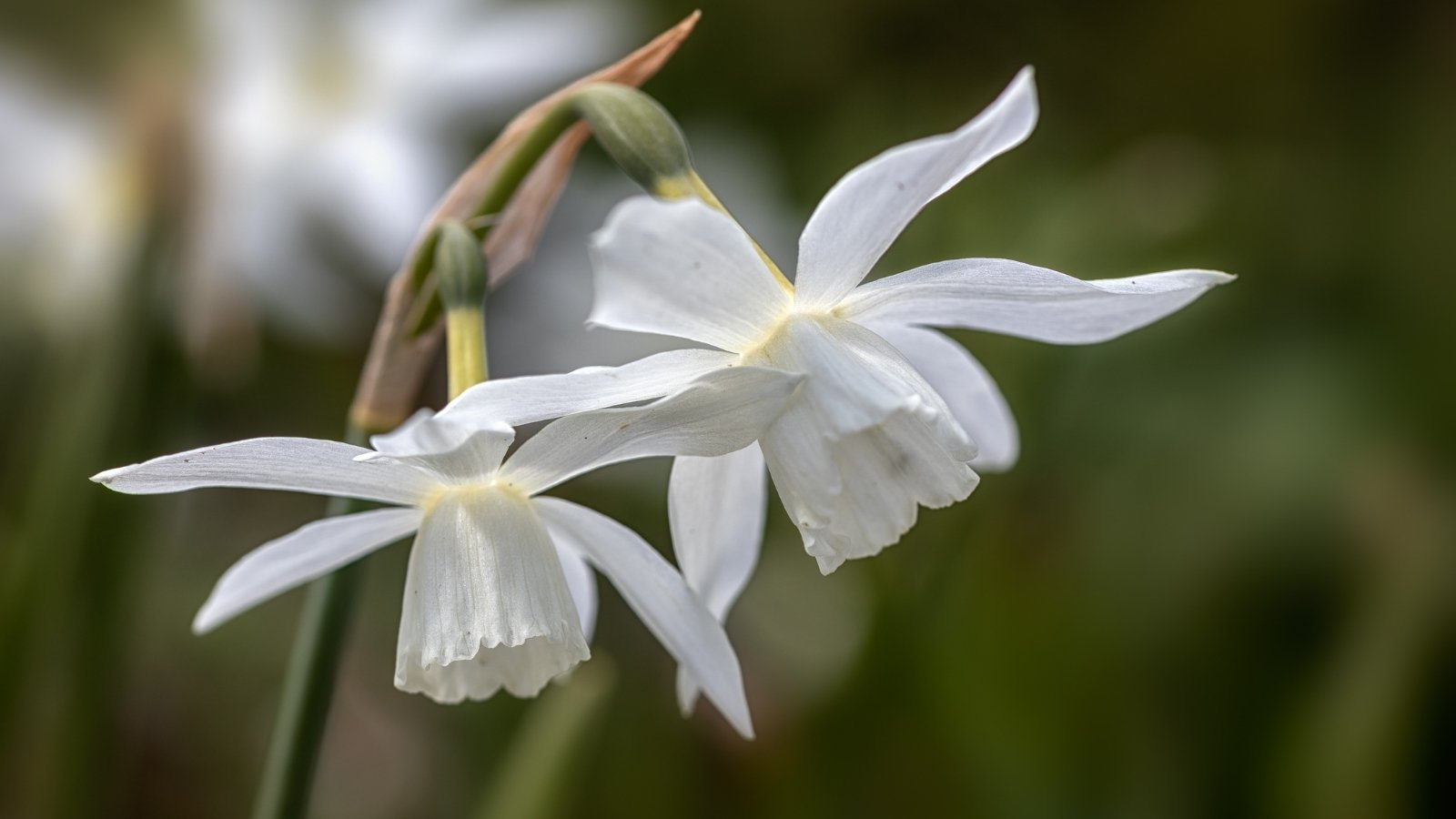
‘Thalia’ is an elegant pure white daffodil with blue-green, grass-like stems. Blooms are sweetly scented. Narcissus triandrus is a wild species native to rocky regions of southwestern Europe. Cultivars of N. triandus, like ‘Thalia’, are characterized by their nodding flowerheads and swept back petals.
‘Thalia’ blooms in mid to late spring. Plant in drifts and allow to naturalize along woodland edges. Or, pair with English bluebells for a beautiful blue and white spring floral display. Provided it receives adequate water during the warm summer months, ‘Thalia’ can also be tucked into rock and alpine gardens.
‘Yazz’
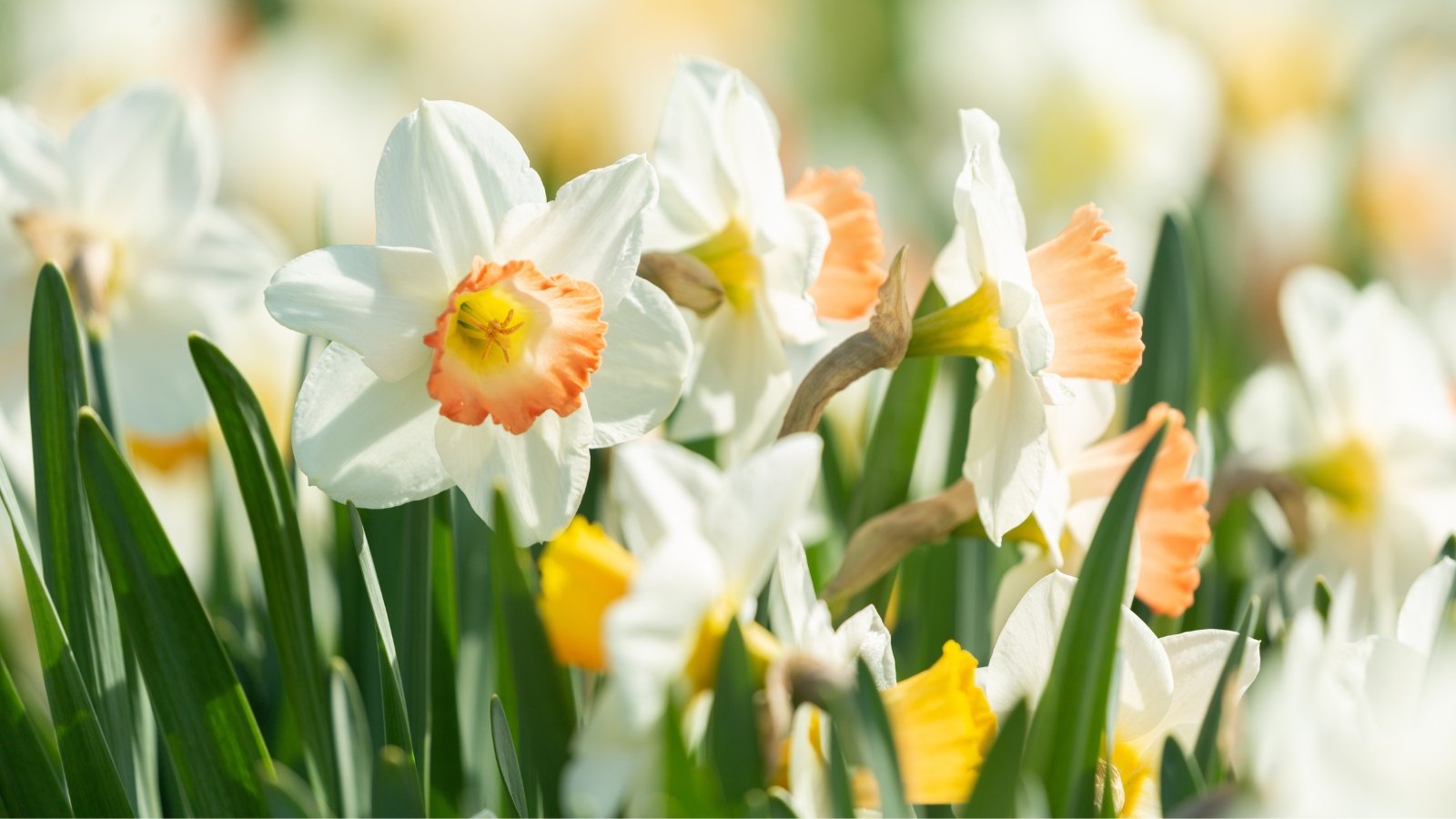
This stunning daffodil reminds me of orange sherbet! The center cup is a glowing apricot-orange with a contrasting pink rim. Outer petals are a creamy white. As a jonquilla daffodil, ‘Yazz’ produces 3-5 blooms per stem.
Although short in stature, this variety’s multi-flowered stems and rich color combinations make this a gorgeous cut flower. ‘Yazz’ blooms in late spring and handles warmer growing climates well. Mix this bulb with other late-blooming daffodils like ‘Dancing Moonlight’ and ‘Falconet’.




